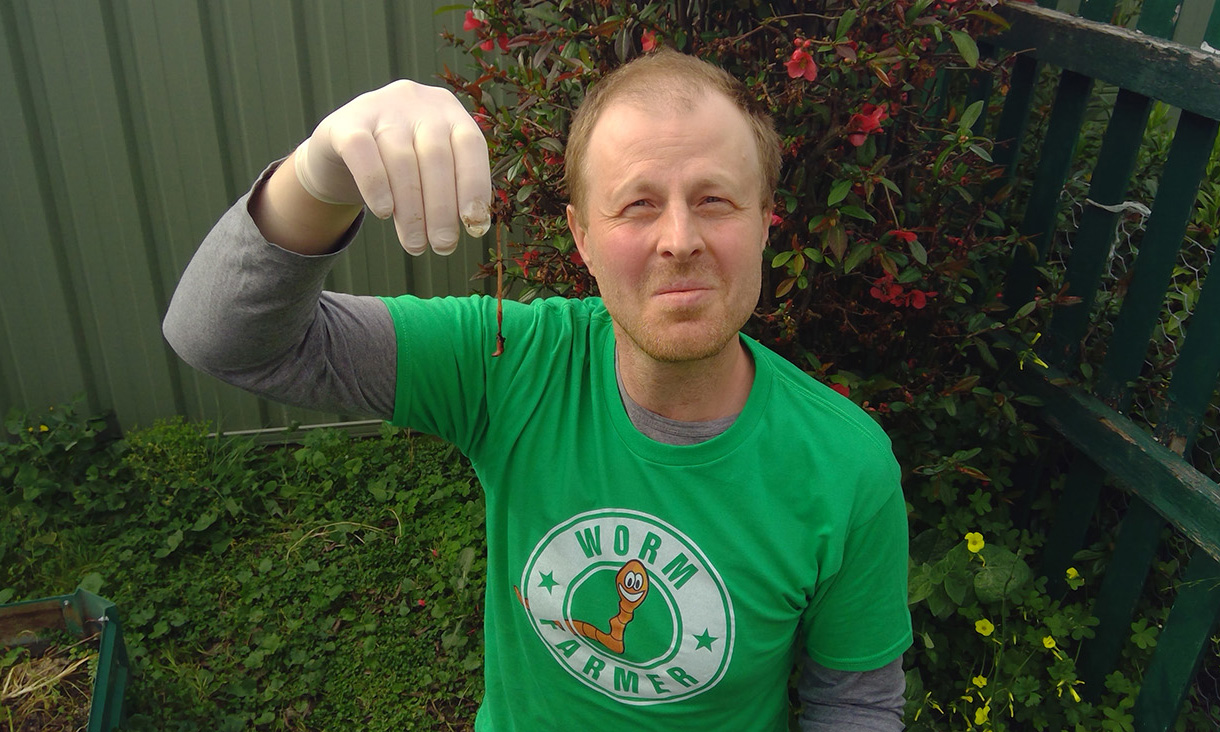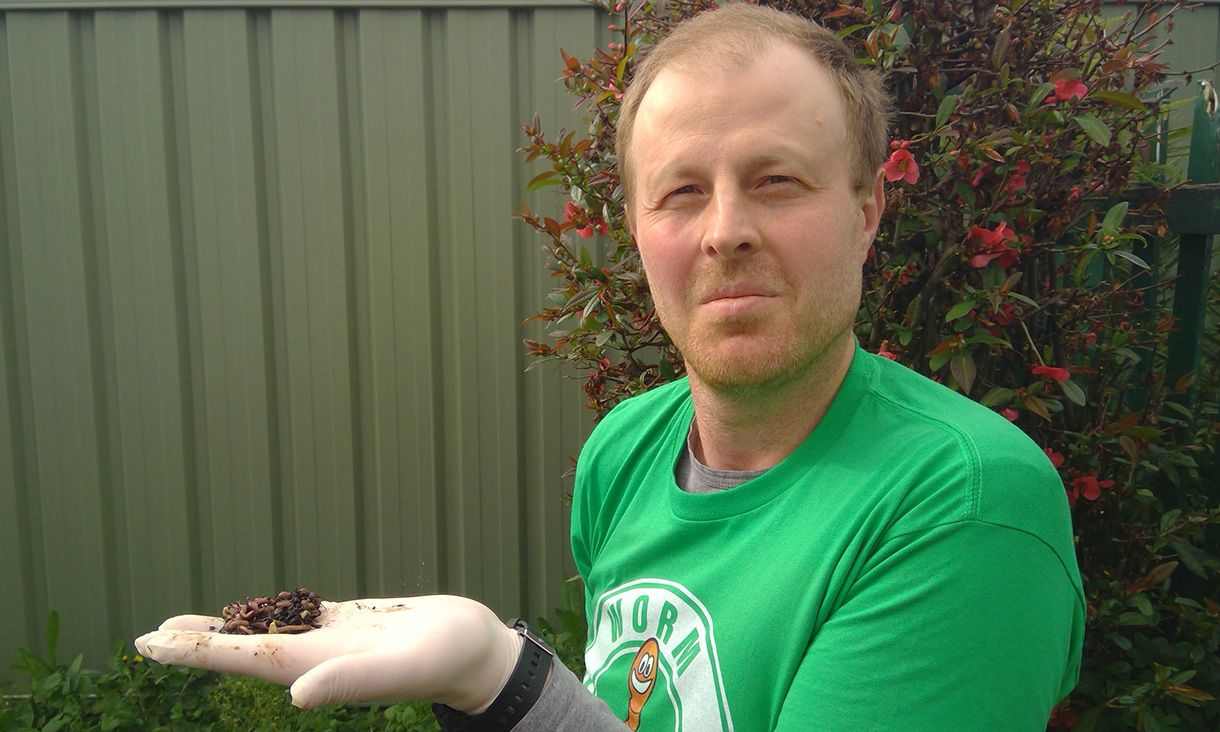Swinburne researchers win global 'IG Nobel' award

Dr Ivan Maksymov's worm research may benefit neuroscience and robotics.
In summary
- Swinburne researchers, Dr Ivan Maksymov and Dr Andrey Pototsky, have been awarded the IG Nobel award in Physics
- Their research, conducted with earthworms, suggests a new approach to creating better machines and robots
- The IG Nobel awards (for improbable research) showcase creative and different approaches to solving serious and complicated problems
Vibrating a slightly intoxicated earthworm on a sub-woofer speaker in a rural Victorian backyard shed – where experiments were conducted because of the COVID situation – has earned Swinburne researchers Dr Ivan Maksymov and Dr Andrey Pototsky the IG Nobel award in Physics.
Their research suggests a new approach to creating better machines and robots.
IG Nobel awards
The worldwide IG Nobel awards (for improbable research) showcase creative and different approaches to solving serious and complicated problems. The name of the award is a pun on the Nobel Prize, which it parodies, and the word ‘ignoble’. They have been run by Harvard University since 1991 and ‘first make people laugh, and then make them think’.
An Australian Research Council Future Fellow in the Optical Sciences Centre, Dr Maksymov is a physicist and is also an associate investigator with the Centre for Nanoscale BioPhotonics (CNBP), while Dr Pototsky is a Senior Lecturer in Applied Mathematics. Their unconventional approach has seen them awarded one of the world’s ten ‘IG Nobel’ awards presented this year.
Their work was inspired by a hypothesis from a Danish scientist that the brain not only functions using nerve-based electric pulses, but also acousto-mechanical (or sound wave) signals.
Some neurobiologists suggested using earthworms for such experiments because they are inexpensive, their axons – or nerve fibres – are somewhat similar to mammalian nerve fibres, and using them does not require ethics approval.
Moreover, Dr Maksymov says: “One can easily anaesthetise a worm using vodka.”

He adds: “When we decided to vibrate earthworms, we did not think of potential applications, because our decision was a pure ‘what-if?’ moment. Later, we started to realise that we did something new and that our results might have several important applications, pushing the frontiers of fundamental knowledge.”
In their experiments the pair observed Faraday ripples on the surface of living earthworms that were sedated using a weak alcohol solution.
“We used a laser to illuminate the worm and a photodetector to collect the reflected light. The intensity of the reflected light was periodically changed due to the ripples on the surface of the worm, which allowed us to investigate their frequency, amplitude and other parameters that physicists usually want to know,” Dr Maksymov says.
“In the case of the earthworms, we observed Faraday ripples because the muscles of a sedated worm are relaxed, but its body, which consists mostly of water, acts as an elongated liquid drop covered by a thin elastic skin.
“Significantly, the earthworms recovered after our experiments and were released into a worm farm.”

Dr Andrey Pototsky collaborated with Dr Maksimov on the IG Nobel prize-winning research.
The results of their experiments were published in the Nature journal, Scientific Reports, and generated international interest through popular science blogs.
As a result of the vibrating worm experiment in the backyard shed, new developments in robotics and mechatronics could be explored.
“Recently, there have been experimental demonstrations of prototypes of soft autonomous robots that move by crawling across surfaces by contracting segments of their body, much like earthworms,” Dr Maksymov adds.
-
Media Enquiries
Related articles
-

- Student News
- Science
- Sustainability
Introducing tomorrow’s global science communicators
Start Talking is Swinburne’s unique video-based public speaking competition, exclusively for undergraduate students
Monday 08 December 2025 -

- Astronomy
- Technology
- Health
- Science
- University
- Sustainability
- Engineering
Swinburne highly cited researchers reach the top in 12 fields
Ten Swinburne academics have been named on the Highly Cited Researchers 2025 list, released by Clarivate
Tuesday 02 December 2025 -

- Science
- Engineering
Swinburne secures grant to advance next-generation metamaterials research
Swinburne physicist Dr Weibai Li has received a Discovery Early Career Researcher Award from the Australian Research Council
Tuesday 02 December 2025 -

- Technology
- Health
- Science
- University
$1.2m ARC funding to boost national X-ray spectroscopy capability through Swinburne and QUT partnership
Swinburne has secured $1.2 million in the latest Australian Research Council Linkage Infrastructure, Equipment and Facilities scheme round
Tuesday 02 December 2025 -

- Astronomy
- Technology
- Science
- Engineering
Meet Swinburne’s Roo-ver Mission team
Roo-ver will be Australia's first lunar rover, and it’s being designed, built and tested in Australia. Swinburne is playing a key role in the design and construction of Roo-ver, through its involvement in the ELO2 Consortium.
Wednesday 26 November 2025

